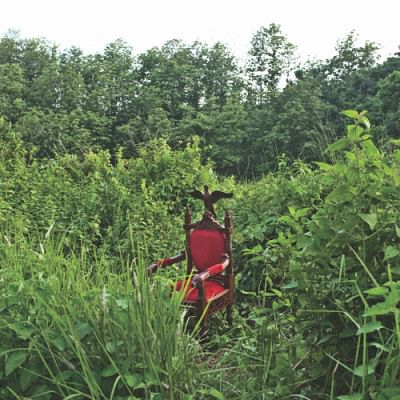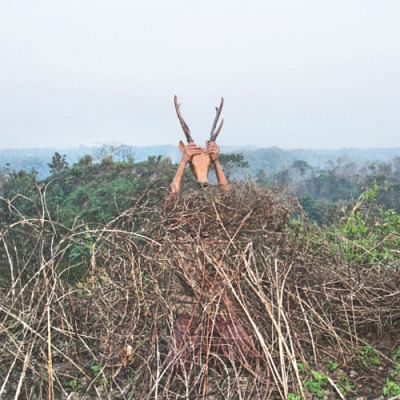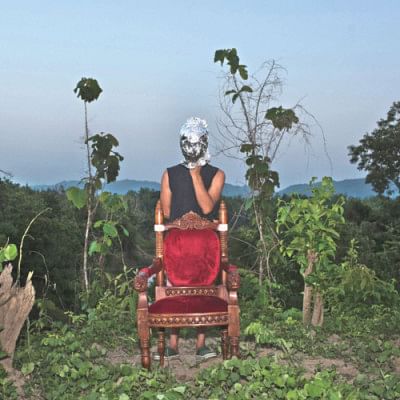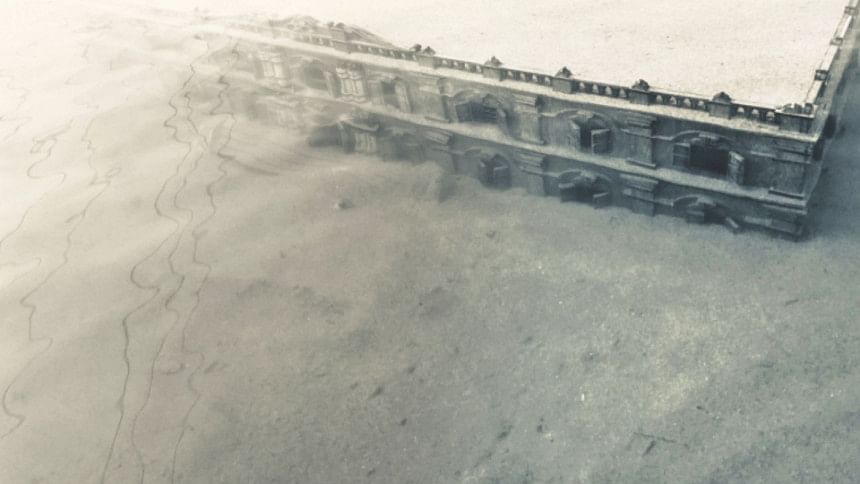Development, but at what cost?

About a year ago in February 2018, documentary photographer Samsul Alam Helal started photographing the people living in the hill tracts of Rangamati. Travel has always been a passion for the Pathshala South Asian Media Institute alumnus; but in this instant, it led him to the history of an entire population displaced by the building of the Kaptai dam in 1962. After a year of documenting the traces of this catastrophe, Helal presented his work in a solo exhibition titled "Disappearing Roots" from March 23 to 29 at the National Art Gallery of the Bangladesh Shilpakala Academy, showcasing the violence and loss of identity created by the displacement.
"Around one lakh people lived in that area before the dam was built," Helal tells me as he describes what inspired him to start the series. The reservoir produces about five percent of the total electricity consumed by Bangladesh today, but 40-50,000 people moved to India after their homes and farmlands were flooded because of the project. The other half of the population moved to Khagrachari and other neighbouring areas. But it was far from a clean split—families were separated, as fathers and brothers died on their journey to India, while others set up makeshift homes in the forests. Helal learned about this history in greater detail once he travelled to the region, and read Samari Chakma's book, Duburider Attokothon (2018). "An entire population and culture had been uprooted and wiped out. I couldn't stop wondering—if the dam really was an initiative for development, why did so many people have to lose their way of life because of it?" Helal asks.

His photographs don't necessarily seek to answer this question, but to reiterate it. A sense of loss permeates the entire series, as children, adolescents, and elderlies are shown standing amidst wild bushes and puddles of mud. There are no houses, no signs of habitation anywhere in the background, only barren nature. The only man-made structure is the throne of the Chakma king but that, too, looks abandoned as it stands askew amidst hedges. It looks out of place because it is—the palace in which it resided was also drowned out by the reservoir. Helal draws attention to it by displaying a laser-cut miniature model of the palace, and through an audio-visual presentation of the building slowly drowning in water. He explains, "I wanted to make a point. If even a royal palace can drown, what hope is there for the homes of ordinary people?"
The weight he places on the effect of loss in these pictures becomes clearer if you compare them to Helal's other works. Be it "Runaway Lovers", which explores the lives of eloped inter-faith couples, "Open Stage", which looks at the Dalit community in Old Dhaka, or "Love Studio", a series on a photo studio with whimsical backdrops in Jurain, Helal's photographs rely heavily on the personal belongings of their subjects and the spaces that they inhabit. They are characterised by bright, bold colours. One would normally expect an even louder riot of colours and shapes in a series that tries to portray the violence of gentrification. But "Disappearing Roots" feels disarmingly subdued. You notice that these people have next to no belongings, no man-made space that has absorbed the flavour of their habitation.

Where is the violence? I asked the artist. "I was trying to highlight the silence left behind by the violence," he responds. "I wanted a gloom, a stillness to permeate the images. The effect was created by capturing the photos with flash in the evening light, so that that the people would stand out more clearly than the dominating greens of the landscape."
But the violence crops up in other elements too. The AV of the palace feels unnerving, supplemented as it is by the gurgle of water and a visual that slowly grows blurry as the building drowns. The throne photographed in the images sits at the entrance to the exhibition, reminding us of its placelessness, of its having been uprooted from its original location. Some of the photographs, meanwhile, show people holding wooden animal heads—a symbol for people uprooted from their bodies, their spaces, while others show young girls with their heads wrapped in foil. Helal refers here to the rape and harassment of indigenous women in the hill tracts, and the silence imposed on their cries for justice.

"These images aren't just about the violence that has occurred in the past, but about events that continue to occur today," Helal explains, referring to the forests, farmlands, and water bodies being destroyed for the construction of hotels, universities, factories, etc. in the hill tracts. He is invested in the message because not many seem to know properly about these effects of gentrification. "On one hand, not many of the younger generation I photographed knew about what really happened in 1962, because there aren't enough written records or stories to inform them. One the other hand, many students of Dhaka University and Jahangirnagar University who visited the exhibition in Dhaka told me that they had no prior knowledge of these events. It made me want to spread awareness through my photography. I'm planning to conduct more programmes on this issue at Dhaka University, Jahangirnagar University, and Chittagong University in the near future," Helal shares.
Sarah Anjum Bari can be reached at [email protected].

 For all latest news, follow The Daily Star's Google News channel.
For all latest news, follow The Daily Star's Google News channel. 



Comments